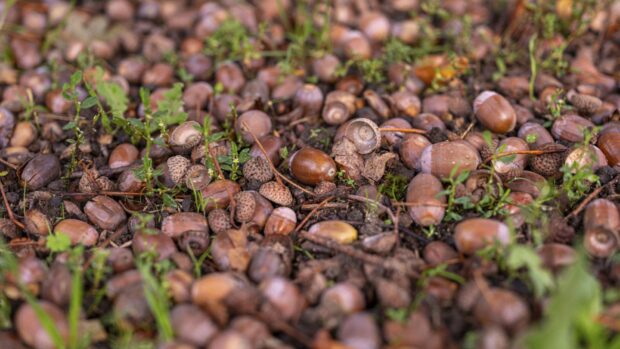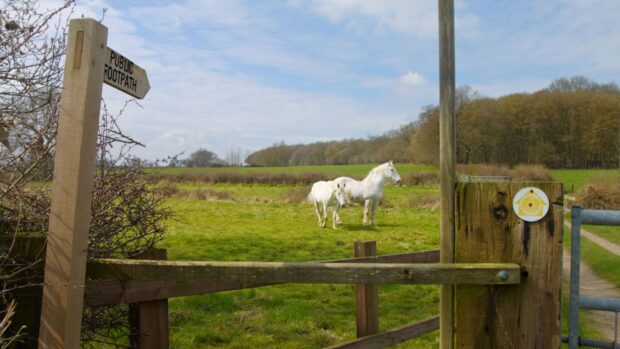Mud can be a shoe-pulling, tendon-tweaking nightmare for horse owners — but must it be an inevitable part of winter? If you’re struggling with the underfoot conditions, what can be done to fix muddy gateways?
“Muddy gateways and water trough areas used to be a pain, but with the trend towards wetter weather, they’re becoming a real issue,” says groundworks specialist Mark Snelson of LandMark Contractors.
“Land drainage is potentially a big job and the water will need to be piped somewhere. But there are other options, depending on your budget.”
Mark’s advice for a relatively cheap long-term solution to fix muddy gateways is to excavate the area and strip the topsoil away before laying a ground membrane. A layer of stone — 15cm for light traffic and horses — can then be laid and topped off with smaller stone or tarmac planings that will pack down.
“This would cost around £15 per square metre,” he says. “You’ll need to extend across the width of the gateway and at least 3m either side. If finances allow, a plastic grid system such as Ecoblock on top will allow grass to grow through, but will provide a tough, mud-free footing.”
A more costly and permanent solution is to lay a large concrete pad.
“The concrete needs a certain type of ridged finish that is non-slip and fairly kind to the feet, but [one that] you can sweep clean,” says Mark. “Expect to pay from around £80 per square metre, all-inclusive.”
While it is feasible to carry out these works at this time of year, Mark points out that the job will be easier in summer when the ground is less saturated. But what if you’re up to your knees in mud and need an instant solution?
“If you have electric fencing, try moving the gate,” suggests pasture expert Miles Greenwood of Equine Pasture Maintenance. “Tipping a load of large, clean hardcore can help provide a higher, dryer area, but ideally it needs rolling flat, which can be difficult in such wet conditions.
“Woodchip is probably a better bet in a real emergency, but this will need replacing with something more substantial long-term. Mats are another option, but if they’re not laid properly on a hardcore base, they can sink into the mud and stick up at the corners.”
A fairly recent arrival to UK shores, but one getting rave reviews from horse owners up and down the country, are Mudcontrol INB slabs. Unlike most mud and grass mats, they can be laid directly on to wet, poached ground and are designed not to sink, even in the wettest conditions. These 50x50cm slabs cost £8.25 including VAT each, plus delivery, and can be moved and reused as required.
To avoid trashing fields completely in winter, Miles recommends fencing off and woodchipping a “loafing area”. This will provide some level of turnout and prevent horses congregating at the gateway leaving a muddy mess to fix.
“It’s not a cheap option, but it can work really well and reduce poached ground,” he explains.
According to Chris Playdon-Heal of Horse Therapy UK, a round pen made of interlocking galvanized steel railings would be large enough to turn out one or two horses. Prices start at £1,700 for 9m diameter and £2,700 for 15m — plus £350-450 extra for a woodchip surface (plus VAT and delivery).
“It’s an effective way of avoiding the many problems associated with mud,” says Chris.
- To stay up to date with all the breaking news throughout major shows such as London International and more, subscribe to the Horse & Hound website
You may also be interested in:

How to help prevent your horse from losing a shoe

Subscribe to Horse & Hound magazine today – and enjoy unlimited website access all year round




